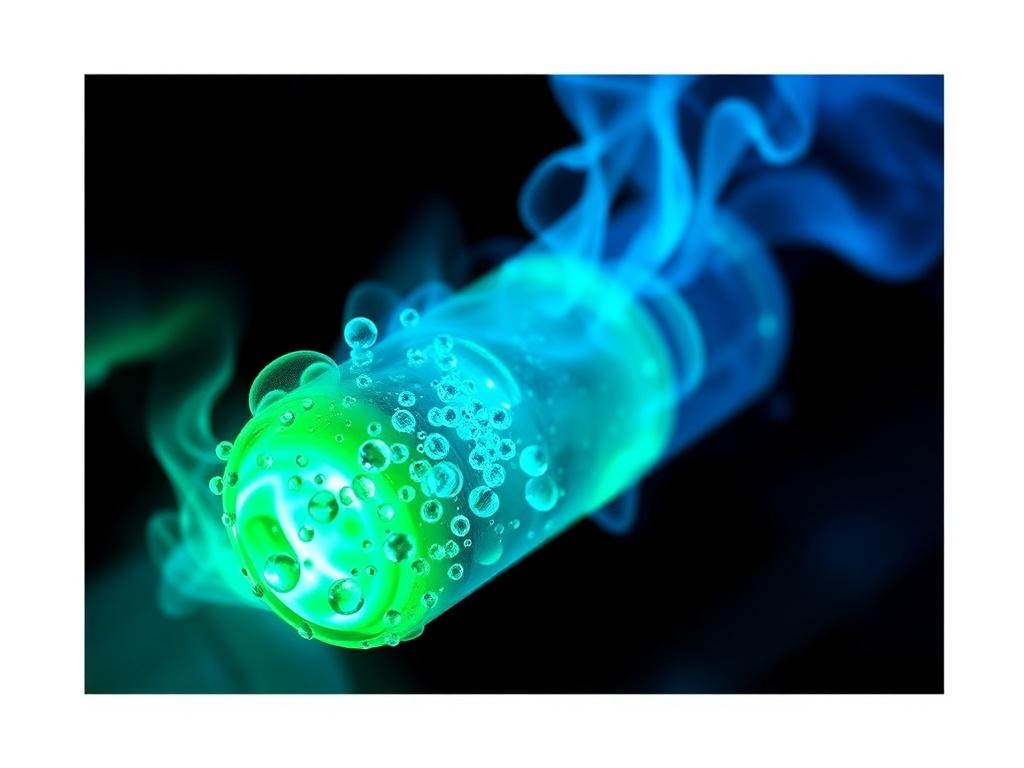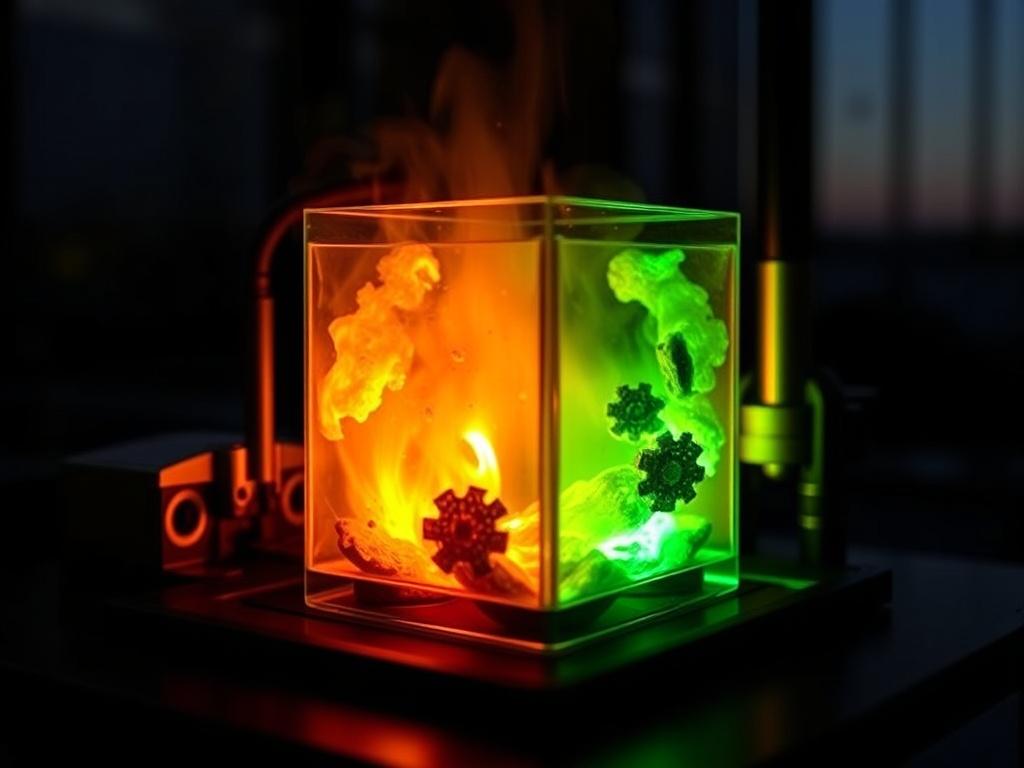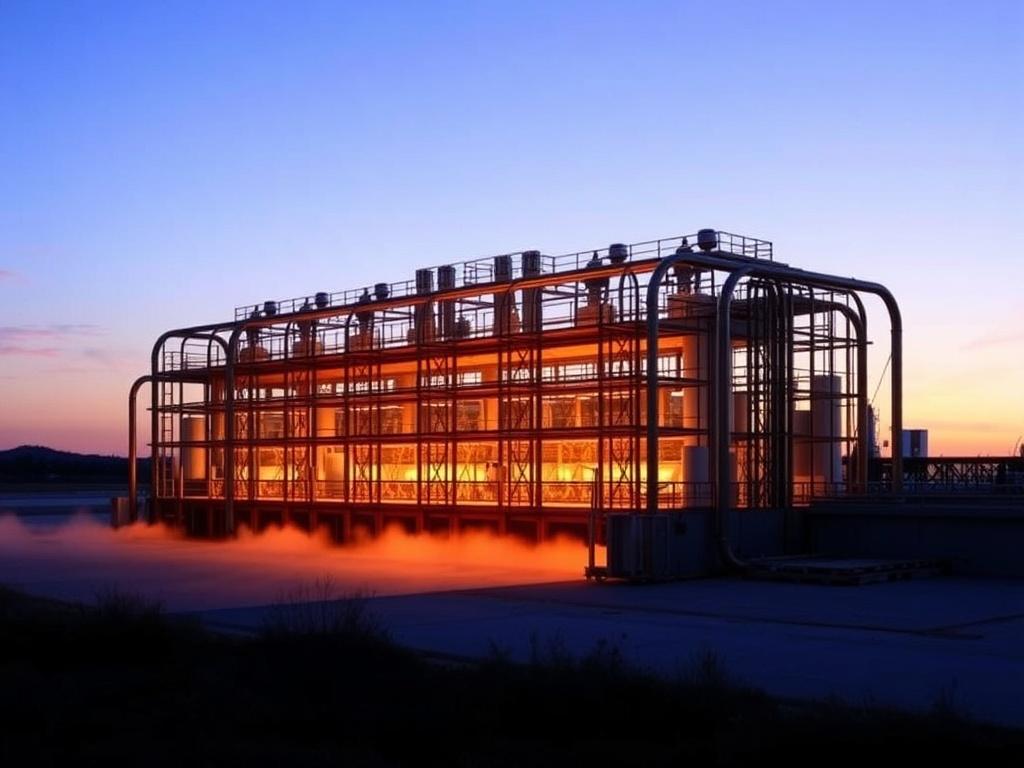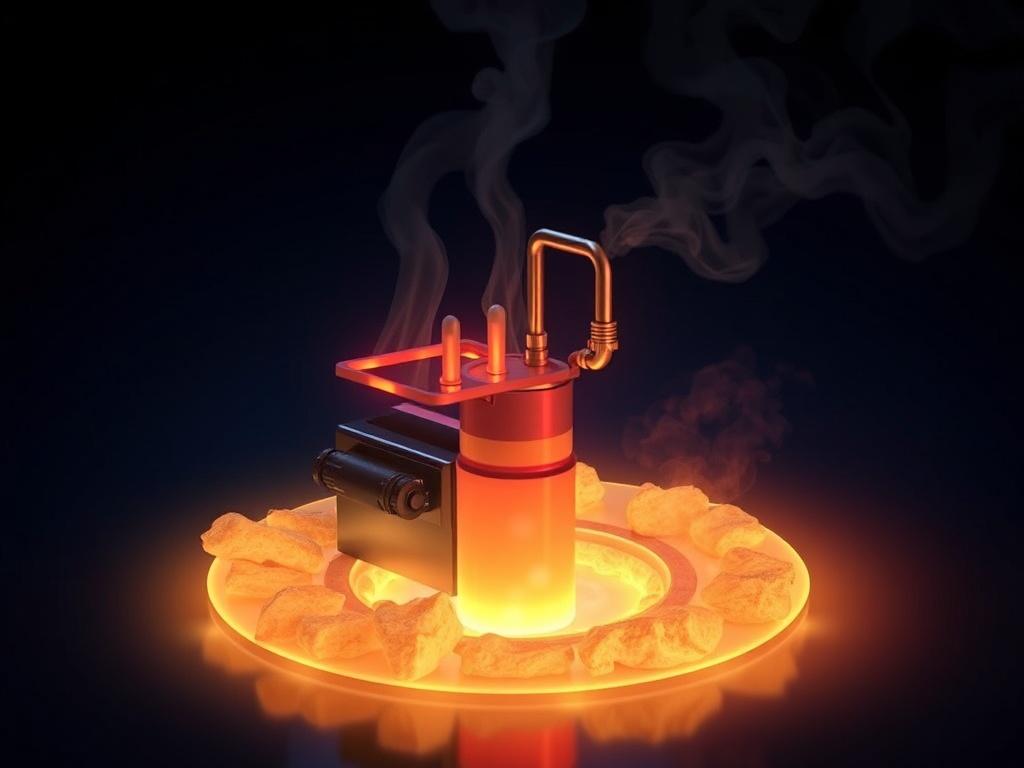- Understanding Methane Pyrolysis
- The Science Behind Methane Pyrolysis
- Traditional Hydrogen Production Methods vs. Methane Pyrolysis
- Steam Methane Reforming (SMR)
- Electrolysis
- How Methane Pyrolysis Compares
- The Advantages of Methane Pyrolysis in Producing Clean Hydrogen
- 1. Minimal Carbon Emissions
- 2. Valuable Byproduct – Solid Carbon
- 3. Compatibility with Renewable Energy and Waste Heat
- 4. Potentially Lower Energy Consumption
- Challenges and Considerations in Methane Pyrolysis
- 1. High-Temperature Requirements
- 2. Handling and Utilization of Solid Carbon
- 3. Scaling Up Production
- 4. Source and Sustainability of Methane
- Current Technologies and Innovations in Methane Pyrolysis
- Types of Methane Pyrolysis Reactors
- Emerging Innovations
- Applications and Future Potential of Clean Hydrogen from Methane Pyrolysis
- Key Application Areas
- The Role of Methane Pyrolysis in the Hydrogen Economy
- Balancing Risks and Rewards: Environmental and Economic Perspectives
- Global Market Trends and Investment
- Summary Table: Pros and Cons of Methane Pyrolysis for Clean Hydrogen Production
- Conclusion
Hydrogen has long been heralded as the fuel of the future. Its clean-burning nature and abundance make it an appealing energy carrier for a world seeking to reduce carbon emissions. However, producing hydrogen in an environmentally friendly way remains a challenge. Enter methane pyrolysis, a promising technology that offers a new path to clean hydrogen. In this article, we will explore what methane pyrolysis is, how it works, its advantages over traditional methods, and its potential role in shaping a sustainable energy future.
Understanding Methane Pyrolysis

At its core, methane pyrolysis is a chemical process that breaks down methane (CH4) into hydrogen gas (H2) and solid carbon without producing carbon dioxide (CO2). Unlike conventional hydrogen production methods such as steam methane reforming (SMR), which releases significant amounts of CO2, methane pyrolysis offers a way to generate hydrogen with minimal greenhouse gas emissions. The process involves heating methane to high temperatures, typically between 800°C and 1200°C, in the absence of oxygen, causing it to thermally decompose into its elemental components.
The Science Behind Methane Pyrolysis
The methane pyrolysis reaction can be described by the following chemical equation:
| Methane Pyrolysis Reaction | Products |
|---|---|
| CH4 → C (solid) + 2H2 | Solid carbon + hydrogen gas |
This reaction is endothermic, meaning it requires heat to proceed. The process thermally cracks the methane molecule, separating hydrogen atoms from the carbon atom. The hydrogen gas produced can be collected and used as a clean fuel or chemical feedstock, while the carbon remains in a solid form, often as carbon black or graphite, which can have various commercial applications.
Traditional Hydrogen Production Methods vs. Methane Pyrolysis
Before diving deeper into methane pyrolysis, it’s essential to understand the landscape of hydrogen production. The most common method today is steam methane reforming, while electrolysis is gaining traction as a greener alternative.
Steam Methane Reforming (SMR)
Steam methane reforming involves reacting methane with steam at high temperatures (700°C to 1000°C) to produce hydrogen and carbon monoxide, followed by a water-gas shift reaction to convert carbon monoxide and steam into additional hydrogen and CO2. While SMR is economically efficient, it emits considerable CO2, contributing to global warming. Capturing and storing this CO2 (CCS) adds cost and complexity to the process.
Electrolysis
Electrolysis splits water into hydrogen and oxygen using electricity. When powered by renewable energy sources, electrolysis produces virtually zero carbon emissions. However, current electrolyzers are expensive, and scaling the technology to meet global hydrogen demand remains challenging.
How Methane Pyrolysis Compares
Methane pyrolysis sits between these two methods, offering the potential for large-scale hydrogen production with significantly reduced emissions and potentially lower costs than electrolysis. Here is a comparison table highlighting key aspects of each method:
| Method | Primary Inputs | CO2 Emissions | Energy Source | Byproducts |
|---|---|---|---|---|
| Steam Methane Reforming (SMR) | Methane, Steam | High (CO2 emitted) | Fossil Fuels | CO2 gas |
| Electrolysis | Water, Electricity | Low (depends on electricity source) | Electricity (preferably renewable) | Oxygen gas |
| Methane Pyrolysis | Methane | Very Low (solid carbon, no CO2 emitted) | Heat (can be renewable or waste heat) | Solid Carbon |
The Advantages of Methane Pyrolysis in Producing Clean Hydrogen

Methane pyrolysis has garnered interest due to multiple benefits, making it an exciting contender in the clean hydrogen space.
1. Minimal Carbon Emissions
Unlike steam methane reforming, methane pyrolysis does not produce CO2 gas. Instead, it directly produces hydrogen and solid carbon. This characteristic means methane pyrolysis can provide hydrogen with a much lower carbon footprint — a crucial factor as industries strive to achieve net-zero goals.
2. Valuable Byproduct – Solid Carbon
The solid carbon produced is not a waste product but an asset. Carbon black, graphite, and other forms of solid carbon have numerous industrial uses, including manufacturing tires, batteries, electronics, and steel production. Selling or utilizing this carbon can improve the overall economics of methane pyrolysis.
3. Compatibility with Renewable Energy and Waste Heat
Methane pyrolysis requires heat, which can be supplied from renewable sources such as solar thermal or waste heat from industrial processes, further reducing its environmental impact. This flexibility allows integration into various energy systems without relying solely on fossil fuels.
4. Potentially Lower Energy Consumption
Compared to methods like electrolysis, methane pyrolysis may consume less energy per unit of hydrogen produced. Since it bypasses the water-splitting step, the energy is focused on breaking methane bonds rather than splitting water molecules, making the process potentially more efficient.
Challenges and Considerations in Methane Pyrolysis
Despite its promise, methane pyrolysis technology currently faces several challenges that need addressing before it can be widely adopted.
1. High-Temperature Requirements
Maintaining the reaction temperature between 800°C and 1200°C requires significant energy input and robust reactor materials. Developing efficient reactors that can operate at these temperatures without degradation is a critical engineering hurdle.
2. Handling and Utilization of Solid Carbon
The solid carbon produced needs to be continuously removed from the reactor to avoid clogging and maintain stable operation. Moreover, finding consistent markets or uses for the carbon product is necessary to ensure the process’s economic viability.
3. Scaling Up Production
Many methane pyrolysis technologies are still in pilot or development stages. Scaling the technology to produce hydrogen at industrial volumes while ensuring reliability and cost-effectiveness remains a significant step forward.
4. Source and Sustainability of Methane
While methane pyrolysis reduces CO2 emissions, it still relies on methane as a feedstock. Methane is a potent greenhouse gas, and its sourcing must be managed responsibly. Biogas or renewable methane could be alternatives that enhance the sustainability of the process.
Current Technologies and Innovations in Methane Pyrolysis
Research groups, startups, and established companies worldwide are developing various approaches to make methane pyrolysis commercially viable. These include innovations in reactor design, heat management, and process integration.
Types of Methane Pyrolysis Reactors
Several reactor types are being explored to optimize methane pyrolysis:
- Fluidized Bed Reactors: Provide excellent heat transfer and uniform temperature but require advanced designs to handle solid carbon removal.
- Plasma Reactors: Use electric plasma to achieve high temperatures quickly, offering precise control but with relatively high energy consumption.
- Molten Metal Reactors: Utilize a molten metal bath to absorb heat and facilitate carbon removal in a liquid medium.
- Catalytic Reactors: Incorporate catalysts to lower energy requirements by promoting methane decomposition at lower temperatures.
Emerging Innovations
— Combining methane pyrolysis with renewable heat sources, such as concentrated solar power, is being tested to reduce fossil fuel dependence further.
— Integration of methane pyrolysis with carbon capture and utilization (CCU) strategies enhances economic and environmental outcomes by converting carbon into high-value materials.
— Hybrid processes that couple methane pyrolysis with electrolysis or other hydrogen production techniques to increase overall system efficiency are under development.
Applications and Future Potential of Clean Hydrogen from Methane Pyrolysis
The hydrogen produced via methane pyrolysis is «clean hydrogen» with a significantly reduced carbon footprint. This clean hydrogen can be used across numerous sectors to accelerate decarbonization efforts.
Key Application Areas
| Sector | Role of Clean Hydrogen |
|---|---|
| Transportation | Fuel for fuel-cell vehicles, shipping, and aviation fuel alternatives |
| Industry | Feedstock for refining, fertilizer, steel, and chemical production with low emissions |
| Power Generation | Hydrogen turbines for power plants, blending with natural gas to reduce emissions |
| Residential and Commercial Heating | Replacing natural gas in heating systems to lower CO2 emissions |
The Role of Methane Pyrolysis in the Hydrogen Economy
Global energy strategies increasingly recognize hydrogen as a cornerstone for sustainable development. Methane pyrolysis represents a complementary method to produce low-carbon hydrogen at scale, especially where methane resources are readily available. Its ability to deliver hydrogen with minimal CO2 emissions, combined with marketable carbon byproducts, can help bridge the gap between existing infrastructure and fully renewable systems.
Balancing Risks and Rewards: Environmental and Economic Perspectives

Assessing methane pyrolysis requires weighing its environmental benefits against potential risks and economic considerations.
- Environmental Benefits: Substantial reduction in CO2 emissions compared to SMR, utilization of solid carbon, and potential for renewable heat coupling.
- Environmental Concerns: Methane leakage during production or transport could offset benefits, and solid carbon disposal must be managed responsibly.
- Economic Outlook: Lower costs compared to green hydrogen (electrolysis) if carbon markets develop favorably; potential revenue from carbon sales improves profitability.
- Policy and Incentives: Supportive policies promoting low-carbon fuels and carbon utilization can accelerate methane pyrolysis adoption.
Global Market Trends and Investment
Governments and private investors are increasingly funding methane pyrolysis projects. Countries with abundant natural gas reserves and strong environmental commitments see methane pyrolysis as a way to transition towards greener energy without abandoning existing infrastructure. Funding for research, pilot plants, and commercialization is growing, promising rapid technology maturation within the next decade.
Summary Table: Pros and Cons of Methane Pyrolysis for Clean Hydrogen Production
| Pros | Cons |
|---|---|
|
|
Conclusion
Methane pyrolysis is an exciting new path to clean hydrogen production that combines the efficiency and scale advantages of traditional methane-based processes with the urgent need for decarbonization. By splitting methane into valuable hydrogen and solid carbon without emitting CO2, this technology offers a dual environmental and economic appeal. While there are challenges to overcome—such as reactor design, carbon handling, and methane sourcing—the ongoing innovations and growing investments suggest methane pyrolysis could soon play a significant role in the global hydrogen economy. As the world transitions toward sustainable energy systems, methane pyrolysis represents a powerful tool to produce clean hydrogen and unlock a future where energy is abundant, affordable, and environmentally responsible.
Как вам статья?







